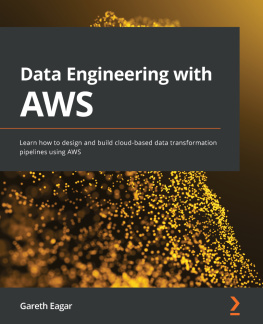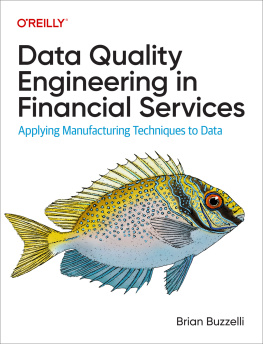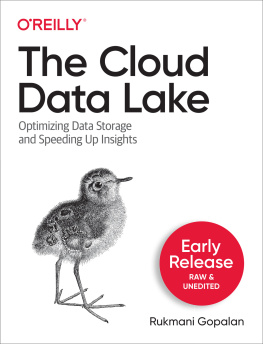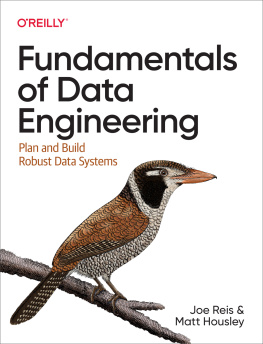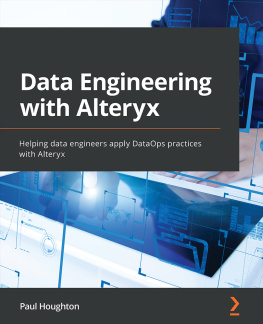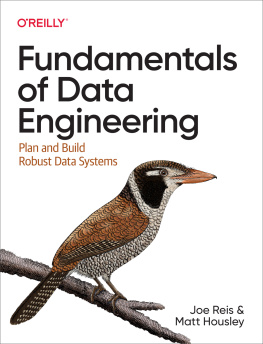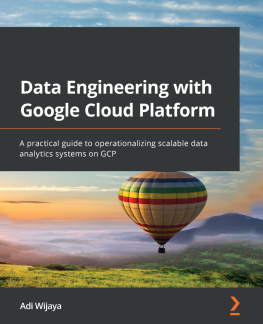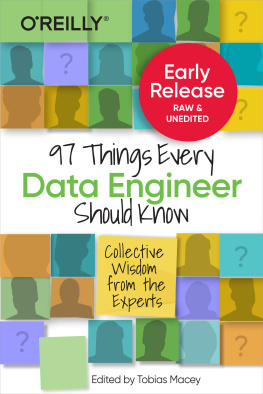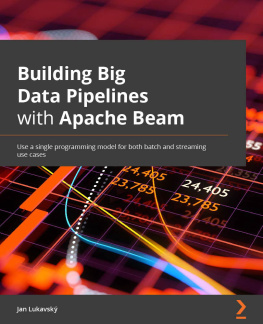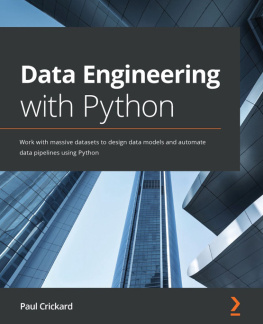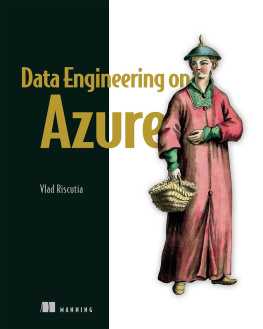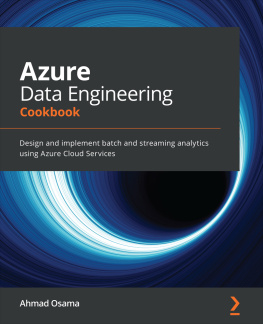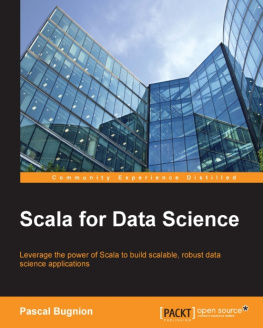Gareth Eagar - Data Engineering with AWS: Learn how to design and build cloud-based data transformation pipelines using AWS
Here you can read online Gareth Eagar - Data Engineering with AWS: Learn how to design and build cloud-based data transformation pipelines using AWS full text of the book (entire story) in english for free. Download pdf and epub, get meaning, cover and reviews about this ebook. year: 2021, publisher: Packt Publishing, genre: Home and family. Description of the work, (preface) as well as reviews are available. Best literature library LitArk.com created for fans of good reading and offers a wide selection of genres:
Romance novel
Science fiction
Adventure
Detective
Science
History
Home and family
Prose
Art
Politics
Computer
Non-fiction
Religion
Business
Children
Humor
Choose a favorite category and find really read worthwhile books. Enjoy immersion in the world of imagination, feel the emotions of the characters or learn something new for yourself, make an fascinating discovery.
- Book:Data Engineering with AWS: Learn how to design and build cloud-based data transformation pipelines using AWS
- Author:
- Publisher:Packt Publishing
- Genre:
- Year:2021
- Rating:4 / 5
- Favourites:Add to favourites
- Your mark:
Data Engineering with AWS: Learn how to design and build cloud-based data transformation pipelines using AWS: summary, description and annotation
We offer to read an annotation, description, summary or preface (depends on what the author of the book "Data Engineering with AWS: Learn how to design and build cloud-based data transformation pipelines using AWS" wrote himself). If you haven't found the necessary information about the book — write in the comments, we will try to find it.
Start your AWS data engineering journey with this easy-to-follow, hands-on guide and get to grips with foundational concepts through to building data engineering pipelines using AWS
Key Features- Learn about common data architectures and modern approaches to generating value from big data
- Explore AWS tools for ingesting, transforming, and consuming data, and for orchestrating pipelines
- Learn how to architect and implement data lakes and data lakehouses for big data analytics
Knowing how to architect and implement complex data pipelines is a highly sought-after skill. Data engineers are responsible for building these pipelines that ingest, transform, and join raw datasets - creating new value from the data in the process.
Amazon Web Services (AWS) offers a range of tools to simplify a data engineers job, making it the preferred platform for performing data engineering tasks.
This book will take you through the services and the skills you need to architect and implement data pipelines on AWS. Youll begin by reviewing important data engineering concepts and some of the core AWS services that form a part of the data engineers toolkit. Youll then architect a data pipeline, review raw data sources, transform the data, and learn how the transformed data is used by various data consumers. The book also teaches you about populating data marts and data warehouses along with how a data lakehouse fits into the picture. Later, youll be introduced to AWS tools for analyzing data, including those for ad-hoc SQL queries and creating visualizations. In the final chapters, youll understand how the power of machine learning and artificial intelligence can be used to draw new insights from data.
By the end of this AWS book, youll be able to carry out data engineering tasks and implement a data pipeline on AWS independently.
What you will learn- Understand data engineering concepts and emerging technologies
- Ingest streaming data with Amazon Kinesis Data Firehose
- Optimize, denormalize, and join datasets with AWS Glue Studio
- Use Amazon S3 events to trigger a Lambda process to transform a file
- Run complex SQL queries on data lake data using Amazon Athena
- Load data into a Redshift data warehouse and run queries
- Create a visualization of your data using Amazon QuickSight
- Extract sentiment data from a dataset using Amazon Comprehend
This book is for data engineers, data analysts, and data architects who are new to AWS and looking to extend their skills to the AWS cloud. Anyone who is new to data engineering and wants to learn about the foundational concepts while gaining practical experience with common data engineering services on AWS will also find this book useful.
A basic understanding of big data-related topics and Python coding will help you get the most out of this book but is not needed. Familiarity with the AWS console and core services is also useful but not necessary.
Table of Contents- An Introduction to Data Engineering
- Data Management Architectures for Analytics
- The AWS Data Engineers Toolkit
- Data Cataloging, Security and Governance
- Architecting Data Engineering Pipelines
- Ingesting Batch and Streaming Data
- Transforming Data to Optimize for Analytics
- Identifying and Enabling Data Consumers
- Loading Data into a Data Mart
- Orchestrating the Data Pipeline
- Ad Hoc Queries with Amazon Athena
- Visualizing Data with Amazon QuickSight
- Enabling Artificial Intelligence and Machine Learning
- Wrapping Up the First Part of Your Learning Journey
Gareth Eagar: author's other books
Who wrote Data Engineering with AWS: Learn how to design and build cloud-based data transformation pipelines using AWS? Find out the surname, the name of the author of the book and a list of all author's works by series.

